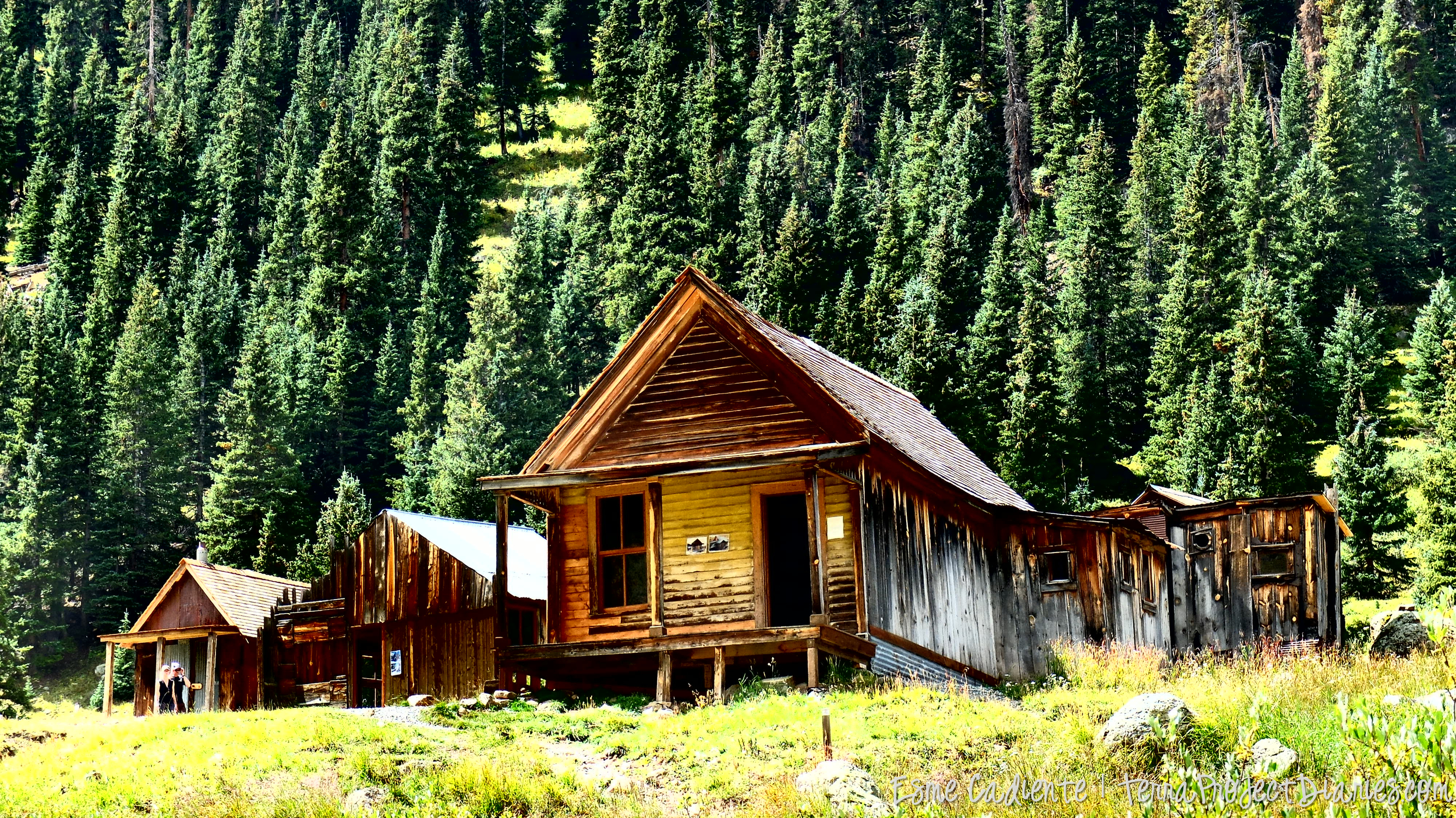The structures at the historic ghost town of Animas Forks will soon be ready to weather the harsh, isolated winters with help from a 2-year stabilization project, which will be completed in September. Click Here to read the Article from the Silverton Standard
Animas Forks is a historic mining town founded in 1875 at the confluence of the east and west forks of the Animas River. The town boomed during the 1880s, resulting from extensive hard-rock silver and gold mining, until 1891 when a devastating fire destroyed 14 of the estimated 30 buildings and left the town virtually abandoned.
With construction of the Gold Prince Mill in 1905 the town once again prospered, but was abandoned once again after another large fire in 1913. The harsh winters and high winds slowly took their toll on the remaining buildings, destroying all but the nine left today.
In 1996, the BLM partnered with the San Juan County Historical Society to try to save the remaining structures. With the collaborative involvement of several of the local historical societies and some private donations, they brought in two groups of AmeriCorps volunteers over two summers, whose work focused on structure stabilization.
Work to fully restore the ghost town began in earnest a few years ago after the land exchange between the Bureau of Land Management and the Sunnyside Gold Corporation.
Phase one of the project, completed last summer, restored five buildings. Not only were they all restabilized from within the walls, but the addition of doors, windows, and new siding and roofs will further protect the buildings from the elements. They also raised the buildings to allow for drainage and improved safety and access to each of the structures.
The highlight of that phase was the work completed on the Duncan House, which stands out because the house incorporates architectural features that were more Victorian and “high style.” The house was built with bay windows, corner boards, trim, and eve decoration typically absent from the more cabin-like houses that dominated the town.
William Duncan, an intrepid snowshoe mail carrier and miner, built the house in 1879 after finding his fortune in sales and investments.
His family was one of the initial four families in the late 1870s to brave the conditions year round, although in later years the Duncan family wintered at lower elevations.
This second phase, which will be completed by the end of September, will restore the other four remaining buildings including the jail.
The jail was built in 1882 using board-on-board construction, a very secure method that ensured a solid, escape-proof jail and a long structural life. The jail was roofless for an estimated 60-70 years. A temporary flat roof has been protecting the building since the AmeriCorps phase of the work.
An old photograph of the jail with the roof still in place will be the inspiration for the new roof to be completed this season.
Loren Lew, of Klinke and Lew Contractors, will design and construct iron bars for the outside window, and new doors will be added. The jail had a double layered wooden roof, for security, but only a single layer of floorboards since it was built directly on the hard mountain earth.
Funding for the first phase came from a grant from the State Historical Fund for $120,180 which was administered by Mountain Studies Institute, with an additional $65,000 from the BLM.
For the second phase, History Colorado provided $115,000 in grant funding with an additional $30,000 in matching funds from the BLM. MSI again administered that grant as part of their mission to support heritage tourism in the San Juan’s.
A study in 2008 concluded that Animas Forks attracted 366,000 visitors a year, and Bruce Bourcy, BLM Archaeologist, believes “there has been a noticeable increase in traffic and visitation in the Alpine Loop in very recent years.”
“The current stabilization and restoration work is expected to keep the buildings in good condition for another 15-20 years,” explains Bourcy. “Hopefully longer as this phase was more comprehensive than previous efforts.”
David Singer of Silverton Restoration Consulting donated time to author the grant applications and manage the implementation of the restoration.
He has worked on many restoration projects, including the San Juan County Historical Society’s museum, the 1929 Mayflower Mill, and the Silverton and Ouray Miner’s Union Hospitals since moving to Silverton in 2002. He holds an undergraduate degree in construction management and a Masters of Historical Preservation.
“Grant writing is like writing a story, it's an art form. You have to weave a compelling story into everything, including the financials.” explained Singer.



